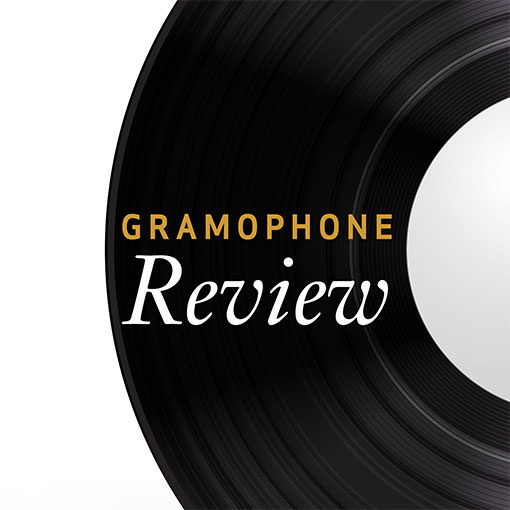Cantates françaises
View record and artist detailsRecord and Artist Details
Composer or Director: François Collin de Blamont, Jean-Baptiste Stuck, Louis-Nicolas Clérambault
Label: Blue
Magazine Review Date: 11/1996
Media Format: CD or Download
Media Runtime: 60
Mastering:
Stereo
DDD
Catalogue Number: 449 144-2AH

Tracks:
| Composition | Artist Credit |
|---|---|
| Didon |
François Collin de Blamont, Composer
(Les) Musiciens du Louvre François Collin de Blamont, Composer Jennifer Smith, Soprano Marc Minkowski, Conductor |
| (Le) Soleil, vainqueur des nuages |
Louis-Nicolas Clérambault, Composer
(Les) Musiciens du Louvre Louis-Nicolas Clérambault, Composer Marc Minkowski, Conductor Mireille Delunsch, Soprano |
| Héraclite et Démocrite |
Jean-Baptiste Stuck, Composer
(Les) Musiciens du Louvre Jean-Baptiste Stuck, Composer Jennifer Smith, Soprano Marc Minkowski, Conductor Thierry Félix, Baritone |
Author: Nicholas Anderson
The cantate francaise flourished during the first half of the eighteenth century. Morin and Bernier were among the most interesting early exponents of it, Campra, Monteclair, Clerambault and Rameau among the most impressive. Indeed, it is generally recognized that the cantate francaise reached its zenith in the hands of Clerambault. He is represented on this new disc by Le Soleil, vainqueur des nuages. It appeared in none of the composer’s five published collections of chamber cantatas but was issued separately in 1721. It enjoyed a degree of success and was performed both at court and at the Opera as well as at public concerts in the Tuileries – an important forum for this genre. Le Soleil is written for a soprano with oboe, flute, violins, basse de violon, bassoon and continuo. It was intended as an “allegorical divertissement on the recovery of the King’s health” – the king in question being Louis XV. The text reads somewhat along the lines of a Lullian opera prologue; in other words containing enough hot air to launch a balloon. Yet the words allow for pleasing word-painting and Mireille Delunsch responds accordingly. An attractive and rhythmically vital piece, if brittle in textual substance, but one which forcefully demonstrates Clerambault’s skill in the medium both of recit and air.
Dido’s tragic fate made wide appeal among baroque composers and painters and Francois Colin de Blamont’s small-scale treatment of the story is touching. Blamont was a contemporary of Rameau who had studied with Delalande and whose three collections of chamber cantatas were issued between 1723 and 1729.Didon is included in the first collection and is scored for solo soprano, strings and continuo, with flute. French inflexions dominate the recits while those of Italy infiltrate the airs; these, none the less, remain in essence unmistakably French. Jennifer Smith gives a passionate account of the piece and is especially affecting in the third and final recit whose text is concerned with Dido’s despair at the departure of Aeneas.
The remaining cantata is by Jean-Baptiste Stuck, sometimes known as Battistin. Even if we did not know that he was Italian by birth and upbringing we should certainly suspect it from the ravishing string suspensions and walking bass that accompany the beautifully poignant opening air of the cantataHeraclite et Democrite. This lovely work for soprano and bass with oboes, two violins and continuo comes from Stuck’s third collection of cantates francaises, published in 1711. Jennifer Smith is joined by Thierry Felix whose warm vocal timbre contributes towards a well-balanced partnership.
In summary, this is an entertaining programme, well equipped with music likely to captivate audiences. For me the weakest part lies in scrawny string playing, sometimes sufficiently ragged to recall much earlier sorties with period instruments. A refreshing issue, all the same.'
Dido’s tragic fate made wide appeal among baroque composers and painters and Francois Colin de Blamont’s small-scale treatment of the story is touching. Blamont was a contemporary of Rameau who had studied with Delalande and whose three collections of chamber cantatas were issued between 1723 and 1729.
The remaining cantata is by Jean-Baptiste Stuck, sometimes known as Battistin. Even if we did not know that he was Italian by birth and upbringing we should certainly suspect it from the ravishing string suspensions and walking bass that accompany the beautifully poignant opening air of the cantata
In summary, this is an entertaining programme, well equipped with music likely to captivate audiences. For me the weakest part lies in scrawny string playing, sometimes sufficiently ragged to recall much earlier sorties with period instruments. A refreshing issue, all the same.'
Discover the world's largest classical music catalogue with Presto Music.

Gramophone Digital Club
- Digital Edition
- Digital Archive
- Reviews Database
- Full website access
From £8.75 / month
Subscribe
Gramophone Full Club
- Print Edition
- Digital Edition
- Digital Archive
- Reviews Database
- Full website access
From £11.00 / month
Subscribe
If you are a library, university or other organisation that would be interested in an institutional subscription to Gramophone please click here for further information.





